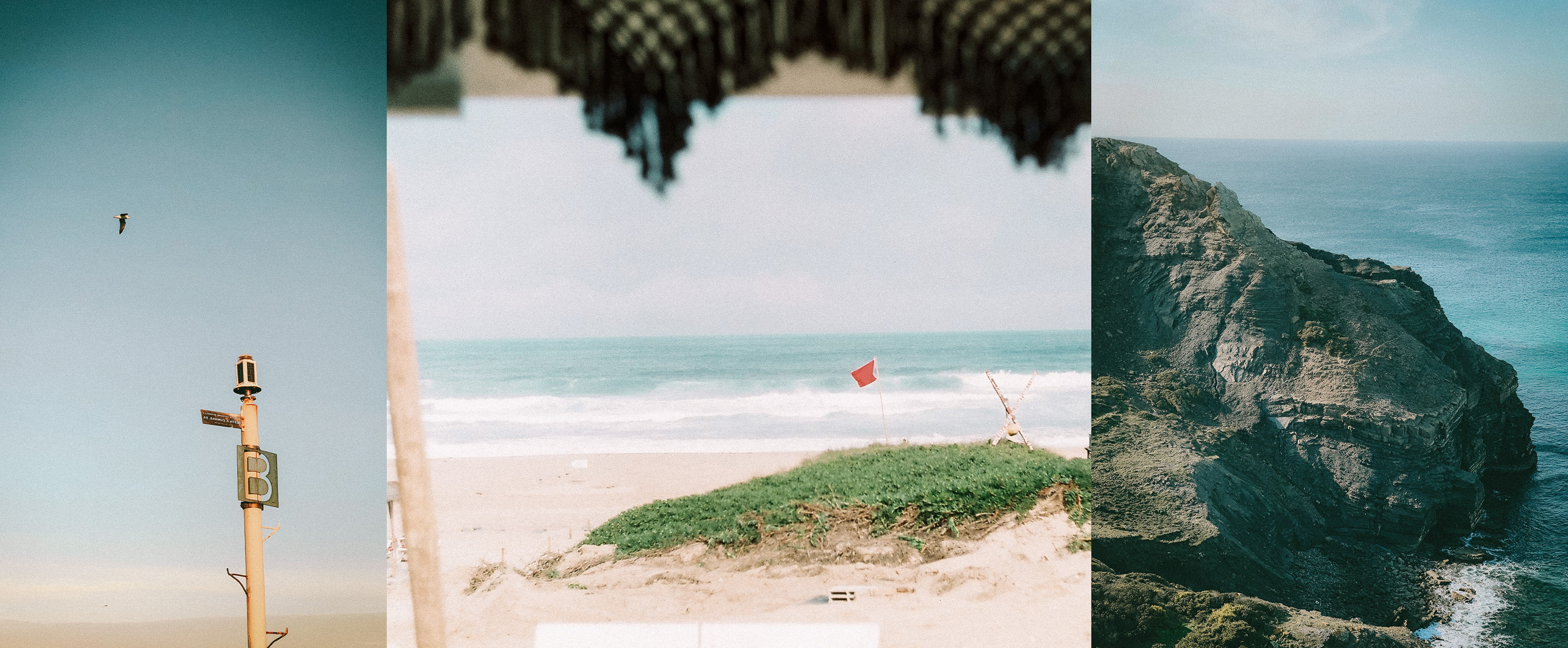
LOCATION • Behind the creations - Raposeira, Vila do Bispo
All the products are 100% Handmade in a small village on the SW coast of Portugal: Raposeira. Located in the middle of the two Atlantic coasts, all resources and singularities are in complete harmony with the place and the environment.
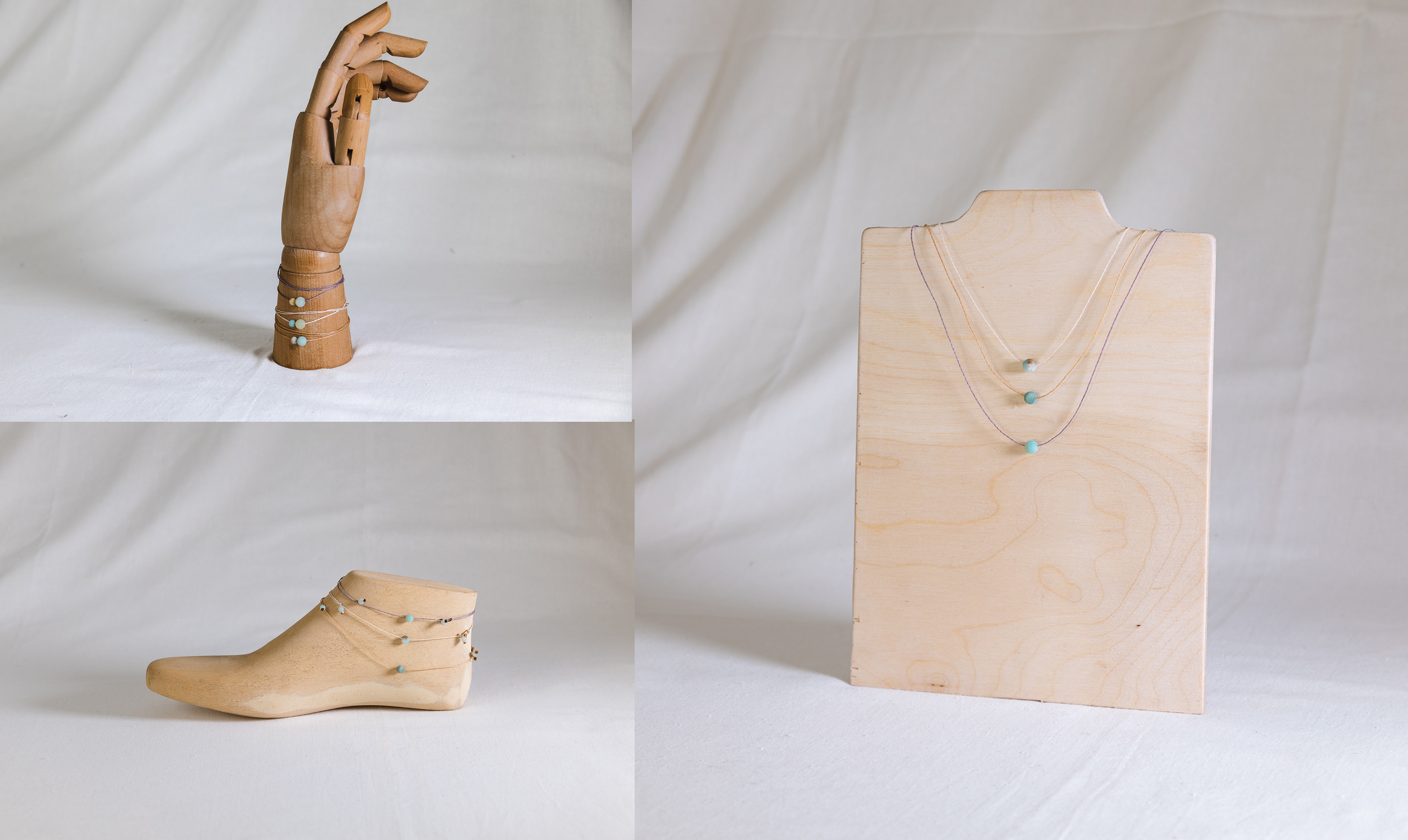
JEWELRY • The story
“Simplicity is ward to find, especially for those who are not used to jewelry. Where could we find something super simple, natural, small and also resistance? Or just a piece of jewelry that we can wear all day, month after month, without breaking or defect? These were my ideals.
For a long time I searched several stores, online, markets, but it was difficult to find all these requests in just one product. So I had an idea: to create my own necklace exactly as I wanted. But then I realize: I am not the only one. Most of my friends are surfers, yoga practicers and they were looking for exactly the same - So I decide to produce and sell my special creation.” Daniela S.F.
Inspired by them, the “receipt” grew and became an innovative design | Copyright © | Nowadays, the LUZALBA® ORIGINAL is a solid product recognized by many customers around the world.
* Much more than a necklace, the same product can be transformed into a bracelet or anklet (you just have to adjust).
**Jewelry photograph credits | Laura Leone

JEWELRY • Recycled ropes
The ghost nets salvaged from the ocean are not the only problem * The ropes from fishing reels + other small fishing recreations are also an environmental issue. LUZALBA® Recycled Edition follows exact the same design, the knots and the amazonite gemstone with a different cord: a special fishing rope recovered from broken reels. Usually used for deep water fishing, because it’s extremely neutral and resistant, when get damaged (not long enough) its time to give them a second life.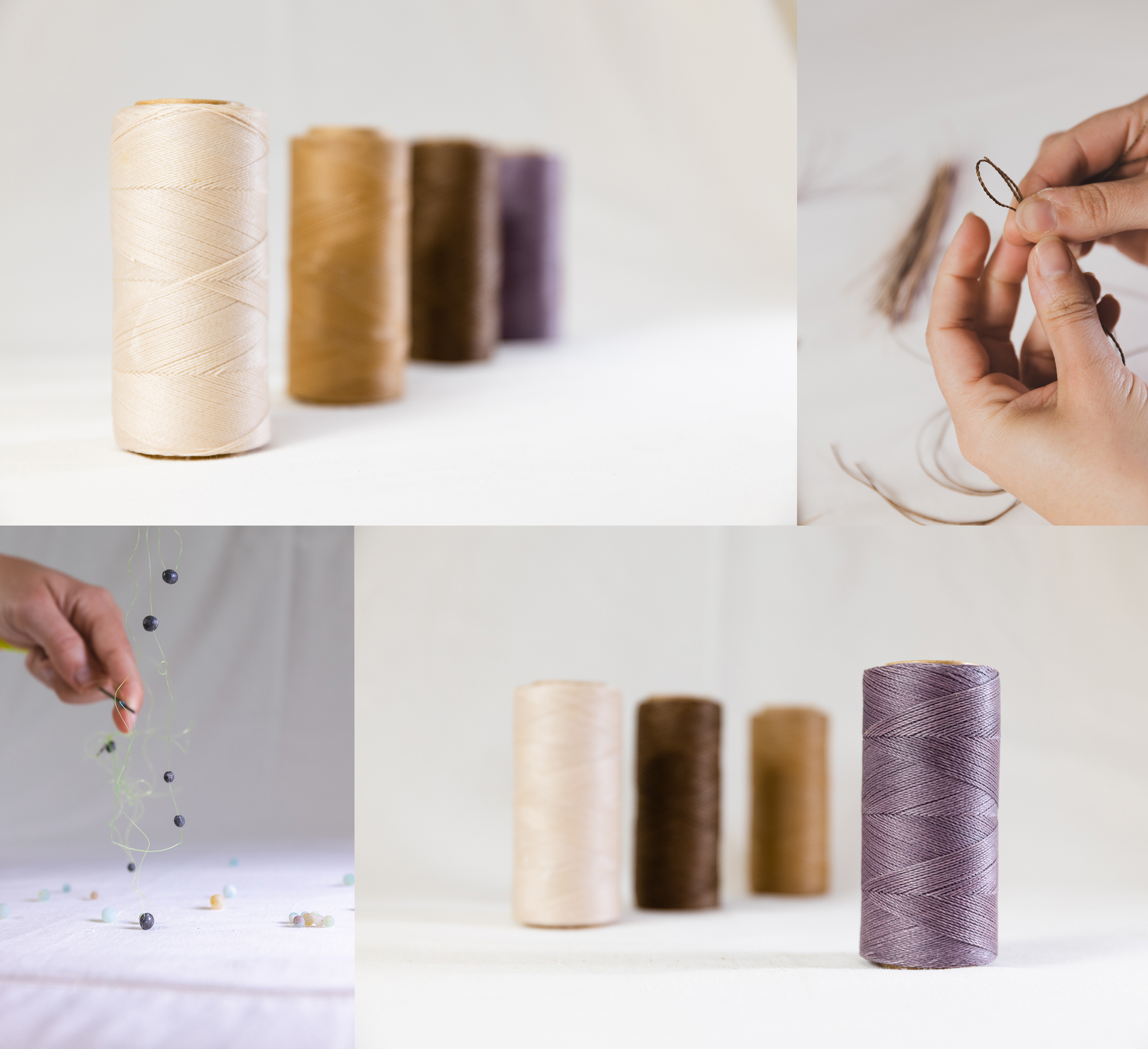
JEWELRY • Materials/Process
Following the culture of nautical knots, all products are 100% handmade. Using the knowledge of the fishing knots, that allows to adjust the cords, creating a mix product: necklace, bracelet or anklet. The colors of the strings are specially chosen to match different skin tones: white, purple, light and dark brown. All strings are waxed, ensuring their durability. What guarantees its authenticity are the precious stones. Amazonite can be blue, turquoise also yellow, brown or beige - these give each item a unique identity (like us).

GEMSTONE • Meaning & Properties
Amazonite gemstone had the properties of healing, self-discovering and empowering the search of our own truths. Known as the stone of courage, it represents the deepness of the ancient waters, promising to relieve the spirit and calm the soul. Throughout history, this metaphysical healer was used by legendary female warriors to turns their anxieties into harmony and balance. There is no better gemstone that brings together all these qualities and wishes!
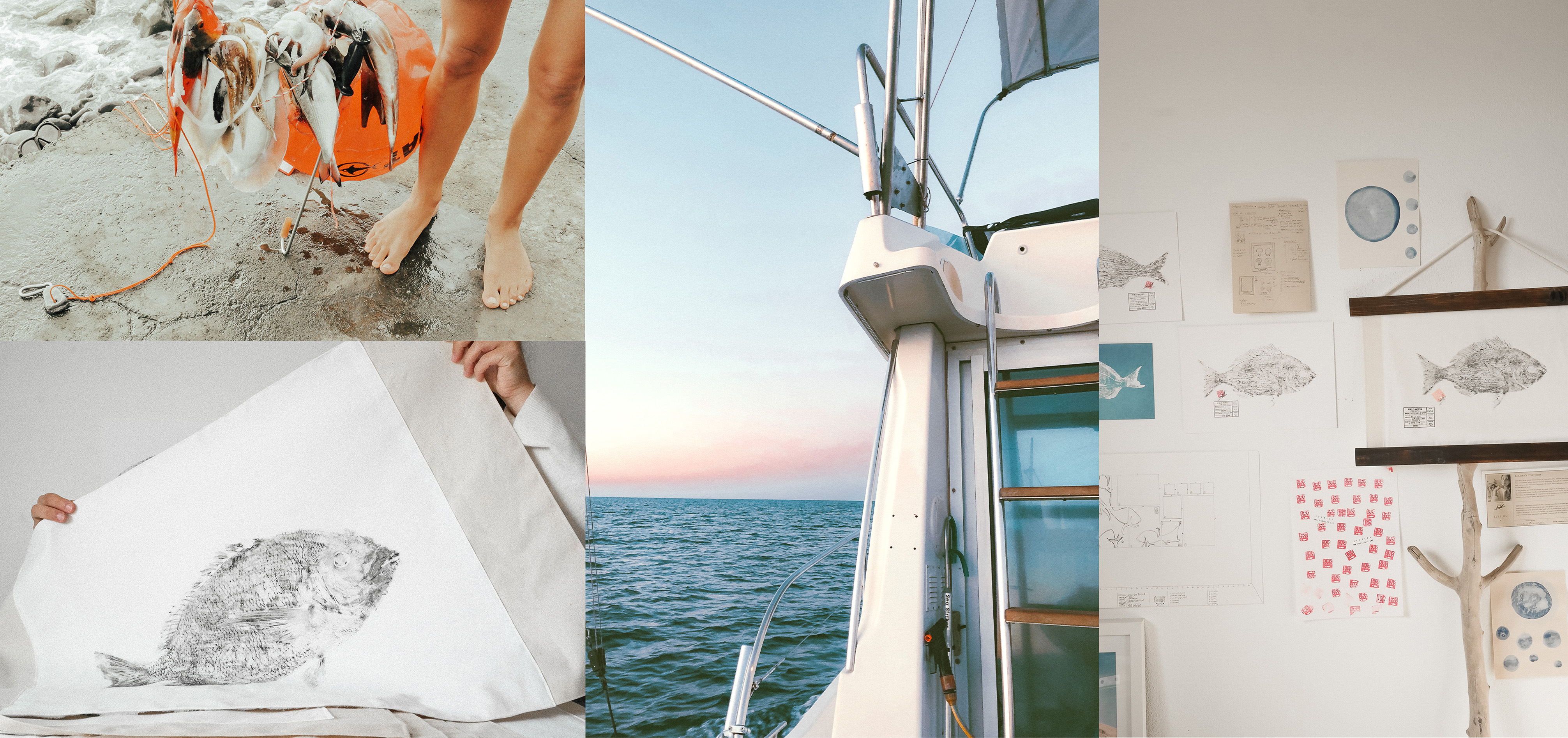
FISH PRINTS • Consciousness fishing and ocean resources
Inspired by my fisherman’s community, these reinterpretations of the Japanese Gyotaku method are a tribute to the Portuguese Ocean. Using fresh fish, mostly from spear fishing at the West Coast (by Matthew Falkous) and jigging fishing (by me and the Lecas Boat Crew - Lagos, PT), the printmaking works with an inked direct method. The black color is no more than squid/cuttle fish ink (depends of the seasons) and all fish are able to be consumed after used. Printed on 100% cotton fabric recovered from local hotels, each fish series are limited (min. 2 | max. 5 art pieces from same fish).
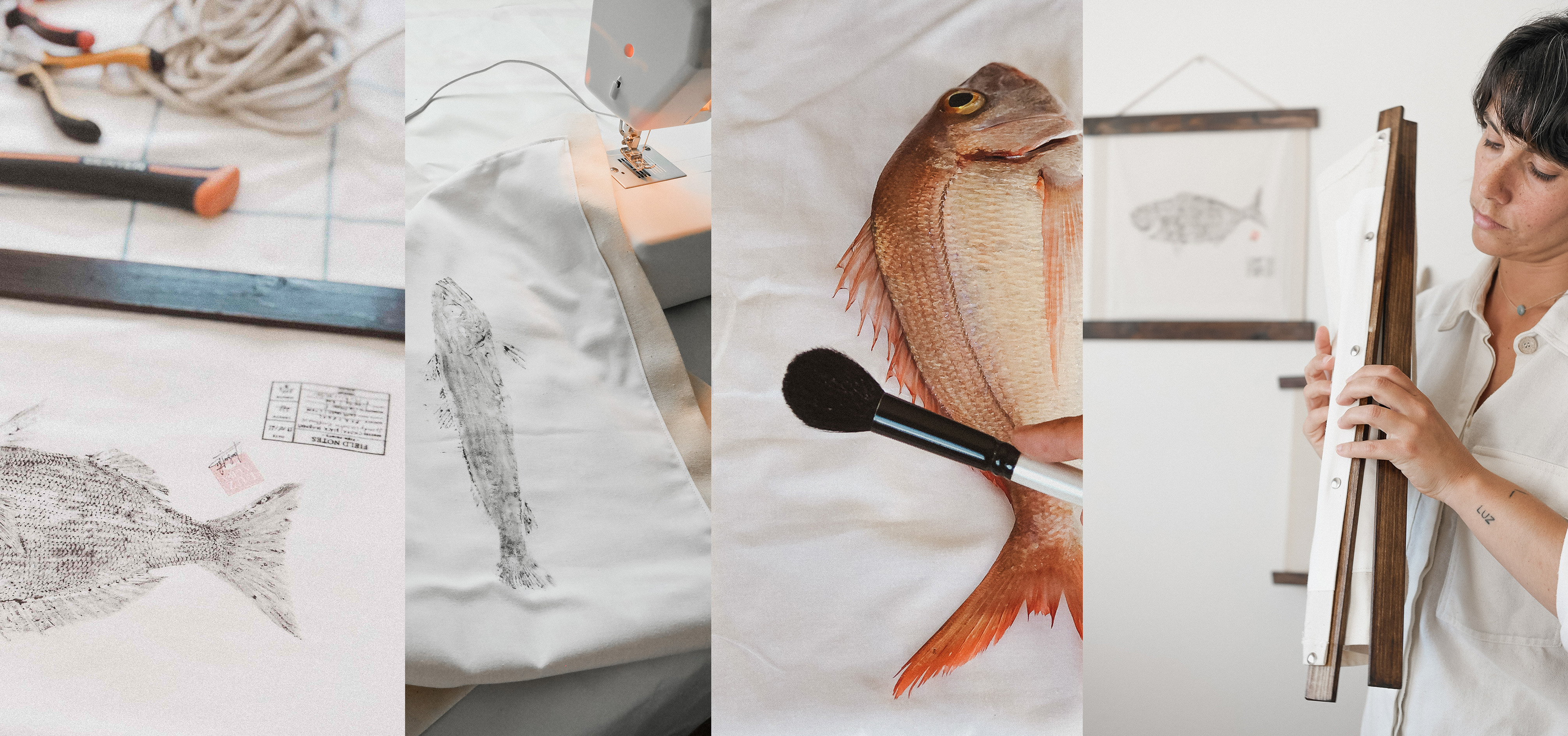
FISH PRINTS • Printmaking process and paper editions
Each fish print comes from a very long process, starting by coughing the fish to the last step: hanging on the wall. The preparation of the fish, the fabrics, ink process, printmaking, iron, sewing, cutting wood + cords - all fish/prints also go through a photographic stage. Thanks to the digitalization process, the fish catalog can be expanded and find a more accessible market. However all the paper editions are limited, signed and numbered by the artist.
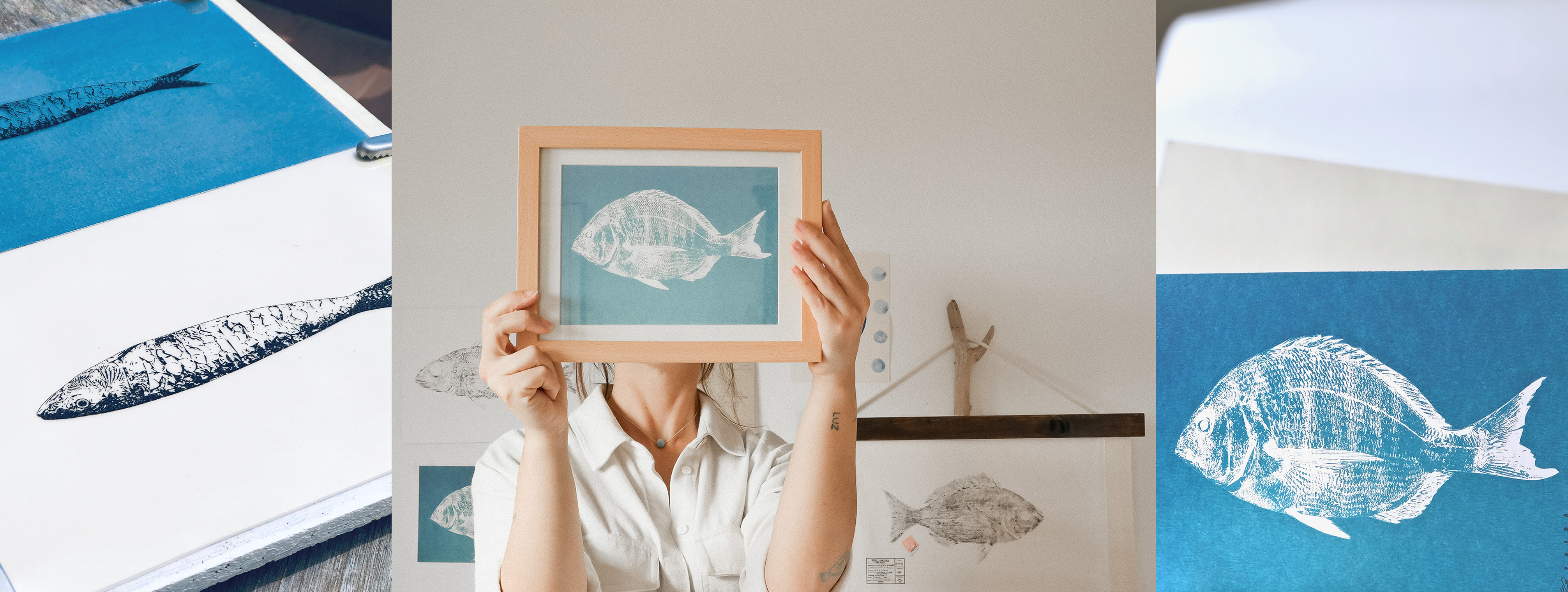
CYANOTYPE • Fish catalog | print editions
Cyanotype is an old photographic print technique. Thought a chemical process of two solutions: potassium ferricyanide and ferric ammonium, the combination goes under the sun and transform positive images in gorgeous cyan-blue prints. The Sea World | Portuguese Fish catalog is also a very special product. The fish cyanotypes available online are reproductions / printed on recycled paper | 300grs. And all editions are limited, signed and numbered by the artist.
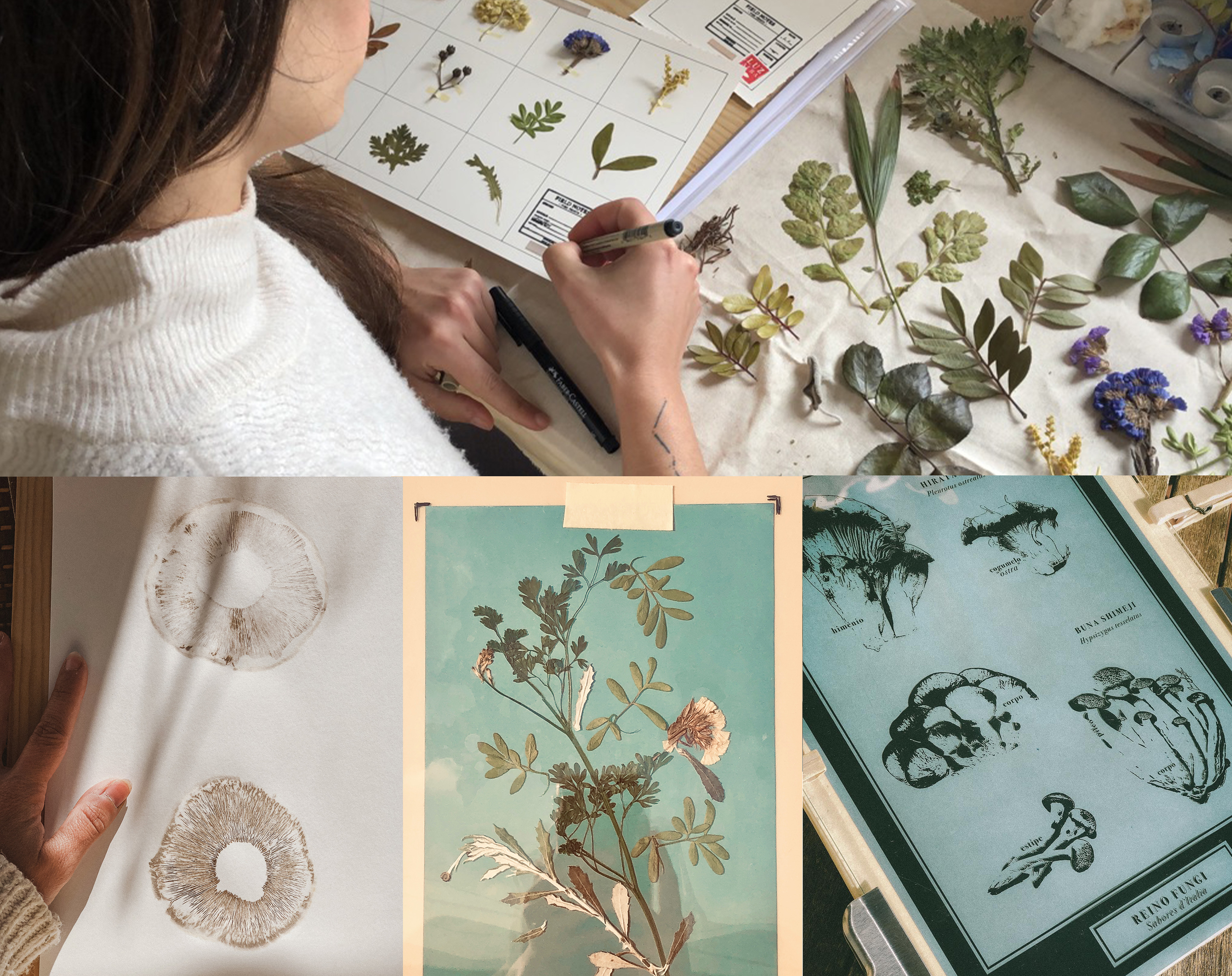
CYANOTYPE • Herbarium original prints
Herbarium's cyanotype prints are all original and unique pieces of art | Following the concept of local protection, it also intends to catalog and preserve the original plants/flowers/mushrooms & other natural elements of the Algarvian SW coast landscapes.
